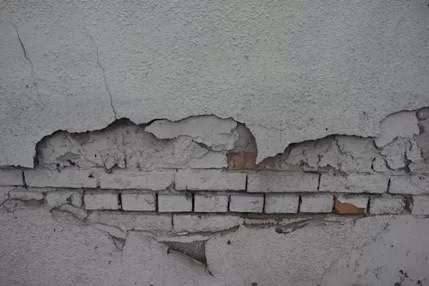Many people believe that once the building dust settles, a house is sturdy and stable over the long term. However, long after their building is finished, homes can suffer structural deterioration from bad workmanship, materials, neglect, or just aging. If you live in a house, you should know the warning indicators of structural damage to address the underlying cause before it becomes costly or irreversible.
Gaps Between Floors and Walls
The presence of spaces where walls and floors meet is frequently an indication of shifting foundations or problems with the construction. When the soil beneath your house settles unevenly, these gaps usually show.
Uneven settlement results in areas of the foundation sinking and pulls floors or walls apart and causing structural damage. This produces noticeable cracks in drywall, even misplaced molding. U.S. Geological Survey statistics show that structural problems in homes are caused mainly by soil movement.
Your house most certainly needs action if it has gaps like this. The basis might not be able to provide enough support going forward. Should this go neglected, things will get considerably worse, and the structural integrity of your house may be compromised.
Roof Leaks and Sagging Roofs
Roof cladding is usually meant to last up to thirty years before needing repair. Should your roof leak but not have reached the end of its life cycle, the issue may be either a lack of appropriate maintenance or movement of timber frames caused by weather.
Fixing roof leaks right away is crucial, since the water may seriously damage the inside of buildings and inflict significant (and expensive) harm. Unequal or drooping roof lines suggest specific problems with the roof construction. A roofing company in Bethlehem, PA can provide a thorough inspection to identify the root cause of the issue and recommend the necessary repairs to ensure the roof’s structural integrity.
Sticking Windows and Doors
Although it could seem a minor annoyance if your windows and doors start jamming, sticking, or not closing correctly, it is usually a symptom of foundation movement. Unevenly shifting or settling the foundation throws the structure of your house out of line. Door frames and window sashes can be warped by even slight movement, which will either cause them to stick or fail to shut totally. A foundation move as little as one inch can result in apparent misalignment.
The tip of the iceberg is misaligned windows and doors. This kind of foundation movement strains other parts of your house, which causes more wall cracks, uneven flooring, and increasing structural integrity problems. Ignoring these indicators worsens the situation, raising repair costs and endangering safety.
Uneven Floors
Uneven floors range in degree and might or might not call for your immediate attention. The primary causes include a settling foundation and improper construction. This calls for the knowledge of a structural engineer to evaluate the problem. Other reasons for uneven flooring include termite damage, fractured floor joists, and insufficient subfloor supports. Restumping is somewhat prevalent in older homes and can be done.
Timber Rot
Although it can endure several lifetimes and is robust and durable, timber must be kept from the weather to guarantee it does not deteriorate too soon. Timber must stay away from surroundings where dangerous fungus can flourish. This ensures your timber is not subjected to excessive moisture and nutrients supporting the fungus, often known as rot which can cause structural damage.
Endnote
If you wish to keep your house and your loved ones safe, structural problems must be quickly evaluated and corrected. See an expert and avoid ignoring these indicators since structural issues can compromise the living conditions of your house.

